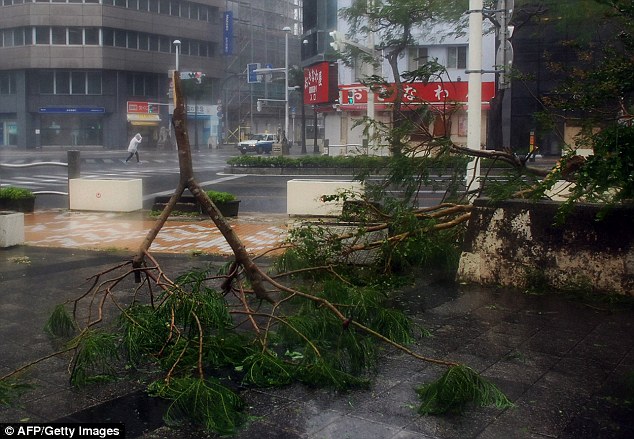
Airports closed and residents were evacuated from low-lying areas and shorelines as Typhoon Neoguri was passing through the islands comprising the southern Okinawa prefecture.
The storm has sustained winds of 108mph per hour and gusts up to 154mph, the Japan Meteorological Agency said.
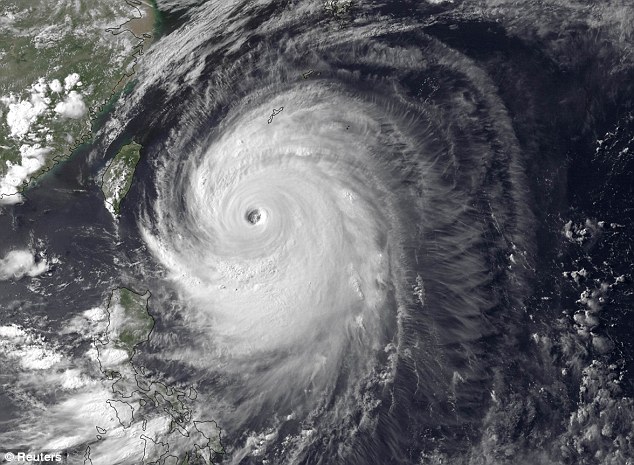
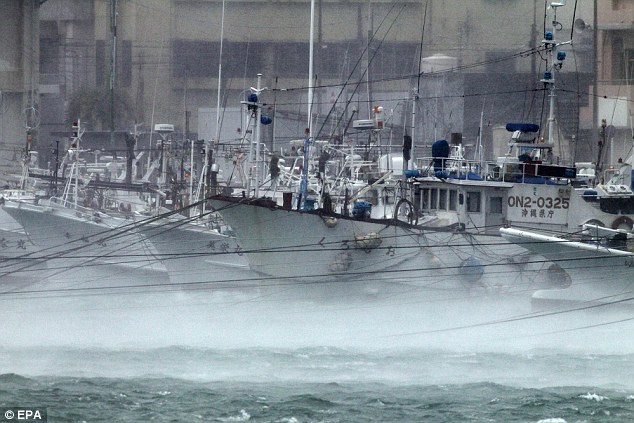
The storm is due to hit the main Okinawan city of Naha this evening.
The national broadcaster said one woman had suffered a head injury due to the storm and one fisherman was missing after he was swept off a boat in seas near the southern island of Kyushu.
The storm was at its most powerful when passing Okinawa, some 1,600 km (1,000 miles) southwest of Tokyo today.
But forecasters warned of heavy rains and potential flooding in Kyushu, the westernmost of Japan's main islands, as well as heavy rain in the rest of the nation as the storm turns east later in the week.
More than 50,000 households in Okinawa lost power and an oil refinery halted operations.
One Okinawa resident said the gusts are powerful enough to knock people off their feet.
She said: 'When the wind blows most strongly, it's impossible to stand. You have to hold on to something.'
'The lights are fading in and out, like the house is haunted. The rain is getting stronger and falling sideways.'
Television footage showed a collapsed roof of a shopping arcade, street lights rocking in high winds and branches being blown down largely deserted streets.
Officials said the storm could be one of the strongest to hit Japan in decades, generating waves up to 46 feet high. But since typhoons track along Japan's coasts and occasionally veer onshore every summer, the country is relatively well prepared.
'Please take refuge as early as possible,' said Keiji Furuya, chairman of the National Public Safety Commission.
The meteorological agency issued special warnings for violent winds, heavy rain and storm surges. The storm was moving slowly and diminishing in intensity, but its wide area and slow movement could add to the potential damage, weather forecasters said.
Evacuation advisories were issued for some 500,000 people, and about 500 sought refuge in Naha's city hall, NHK reported.
Government leaders held an emergency meeting yesterday, urging local governments and residents to take maximum precautions. Authorities in China and Taiwan also warned ships to stay clear of the storm.
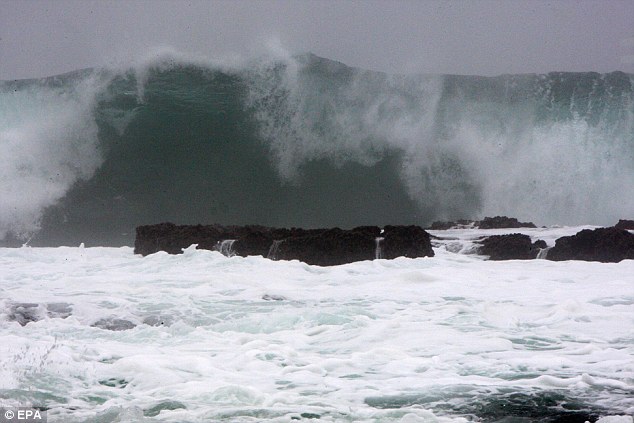
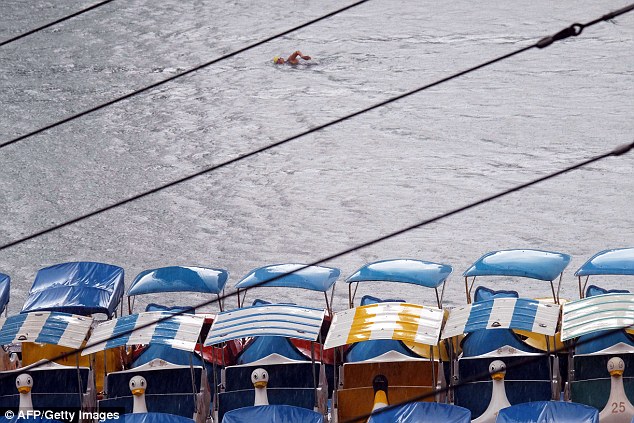
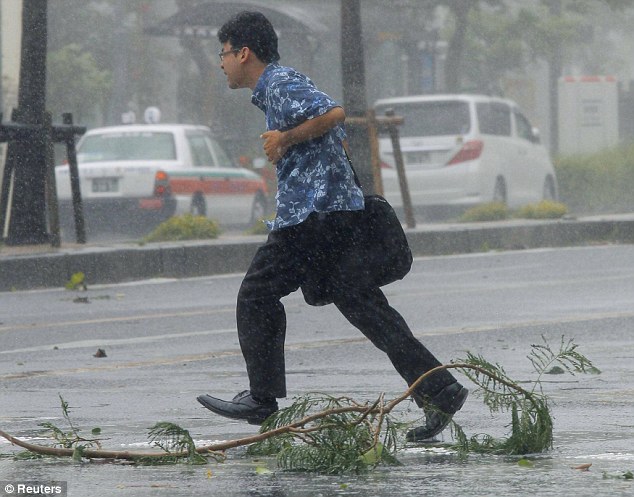
Such risks are elevated by the storm's timing, at the tail end of Japan's summer rainy season.
The Philippines, which suffered the strongest typhoon to ever hit land when Haiyan struck six months ago, was spared the ferocious winds of Neoguri.
The storm did not make land fall and remained about 480 kilometres (300 miles) east of the northern-most province of Batanes, when it roared past on Sunday.
The typhoon did intensify the country's south-west monsoon, dumping heavy rains on some western Philippine provinces.
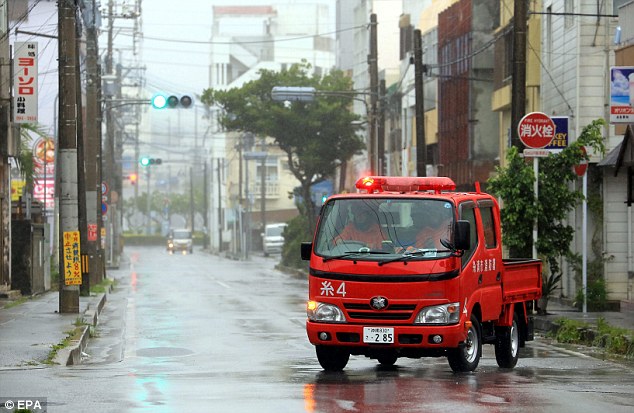
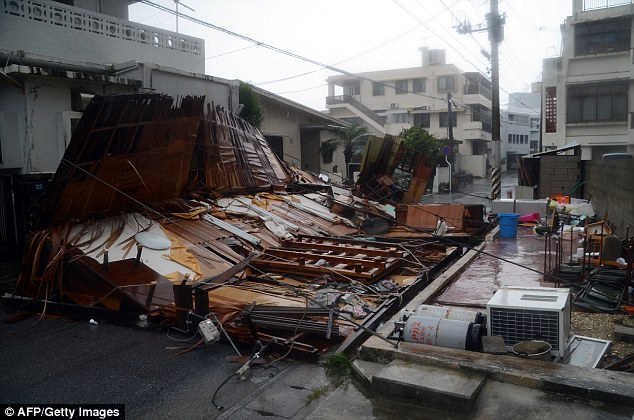
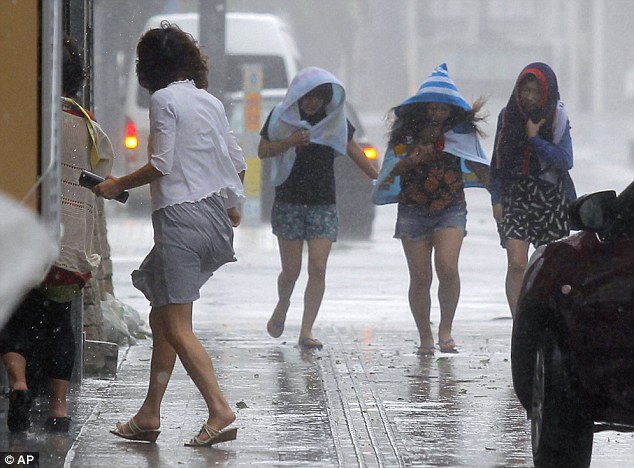
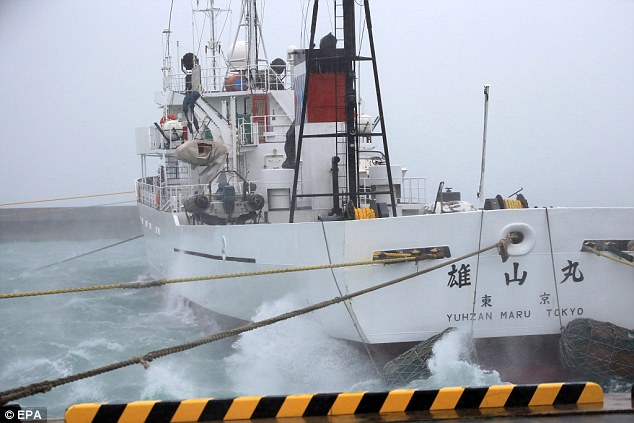



How has the storm affected Japan's Chernobyl?